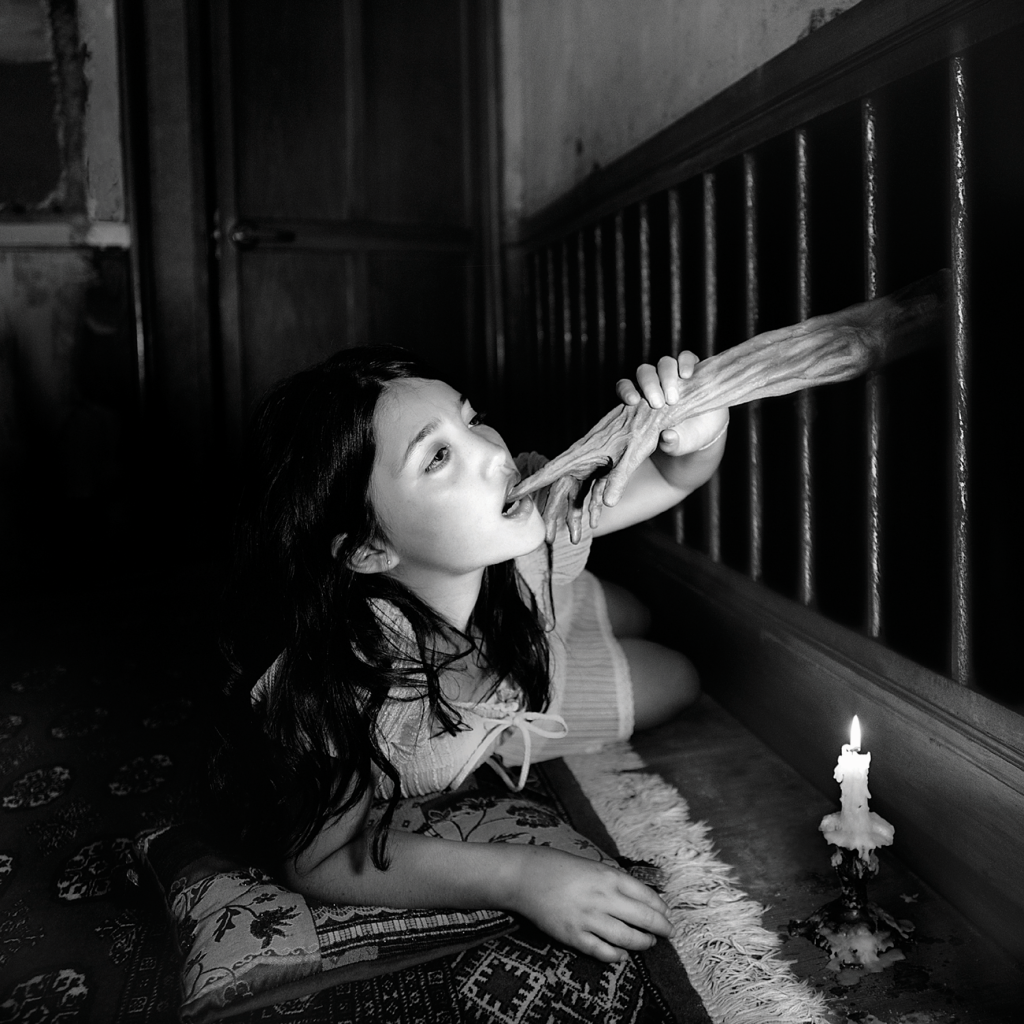Miwa YanagiFairy Tales

From what I can find on Miwa Yanagi’s life, it appears to resemble a fairy tale. Little information is available about her life before she hit the art market, but it sounds like she was like Cinderella, working away doing menial chores when suddenly — as in a movie — she got lucky and everything turned golden and became easy. I do not believe this for a second. Even if Yanagi was struck by luck, it was up to her to recognise her good fortune and act on it. Apart from anything else, the work itself had to exist in the first place.
From her early work, specifically her Elevator Girls series, to recent work such as the Fairy Tales series, Yanagi uses and re-uses the symbols that lurk in her mind. As a result, Disney, the Brothers Grimm and Perrault are everywhere in the work, as are images and iconography drawn from Japanese science-fiction films and comics. Above all, the place of women is of primary concern to Yanagi. Needless to say, the artist has first-hand knowledge of woman’s place in society and can, therefore, exploit the established and codified symbols of constructed gender roles to express her thoughts. Whether she is aware of Sandy Skoglund’s work is unimportant: what matters is that both women make powerful use of the ambivalent relationship between reality and the photographic image to lead us into worlds structured by their own fears and desires.
As Yanagi developed grammar and vocabulary for her art, her images became increasingly mysterious. They also appeared to become increasingly spontaneous, although careful inspection reveals that the artist is in complete control of what is going on in the frame. Like Nancy Wilson-Pajic, Yanagi allows our imaginations to enter the images and become part of the fairy tales she has constructed. Like all great filmmakers, her strength is in making us believe that we have a choice, that we can organise the scenarios within our own lives.
Yanagi fits in with the current trend of much Eastern contemporary art in that it is concerned with ideology. Specifically, it is concerned with the changing role of women in modern Japan and with the propaganda of consumerism prevalent in the growing economies of the east, namely China and India. Yanagi upholds the banner of criticism and questions women’s conformity.
